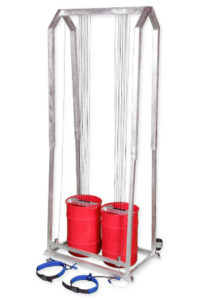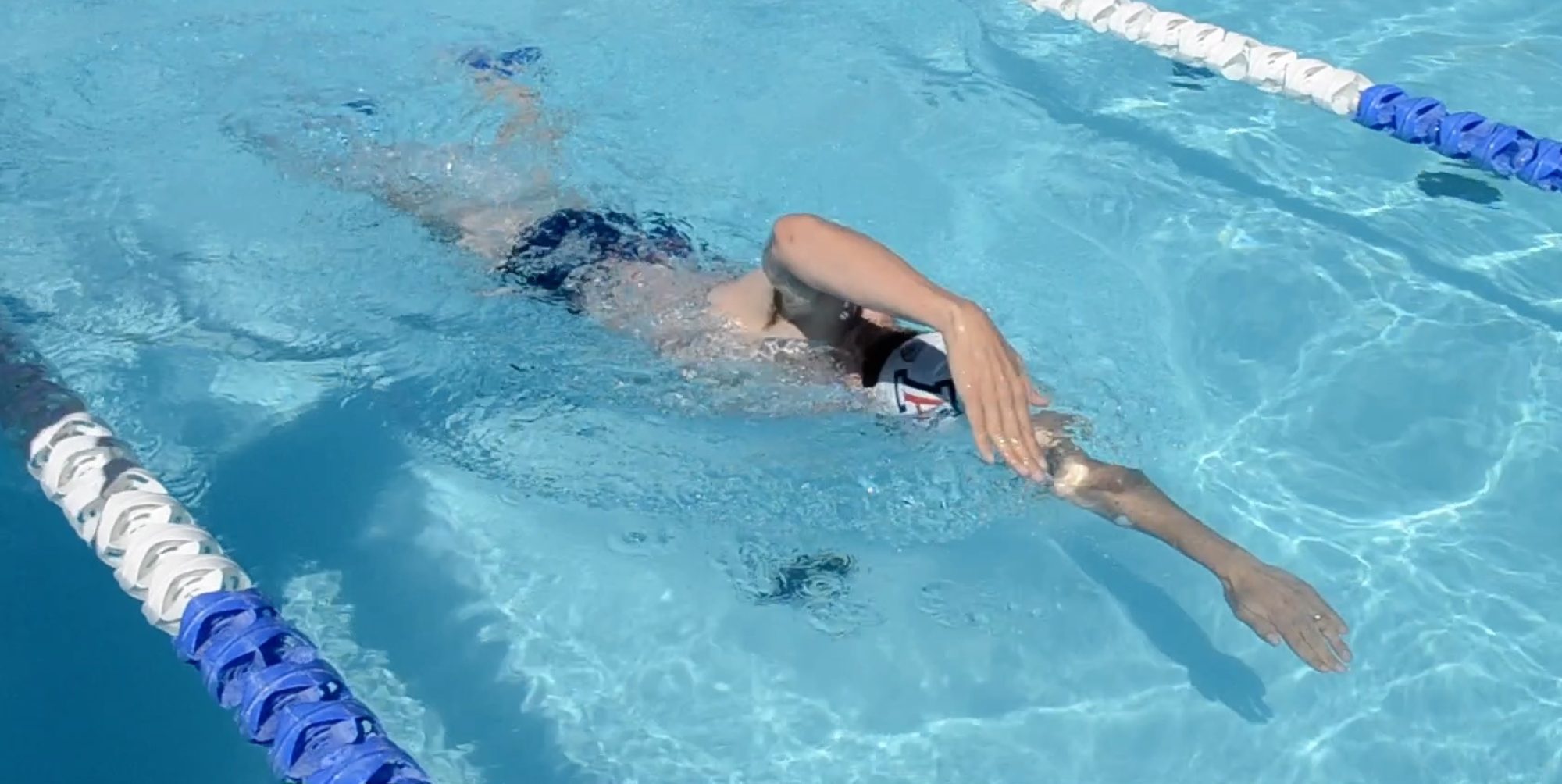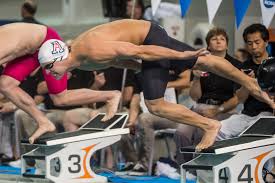For the few who do not know, Brad Tandy is going to compete in the 2016 Olympic games for the country of South Africa. He swam at the University of Arizona for the latter part of his collegiate career where he broke the school record in the 50 yard freestyle with a 18.8 (Race Link Here). The man is quick!
The apparatus that Tandy was using at practice is known as a “power tower” (Shown Below). It is a belt that’s attached to a bucket via a pulley system. The bucket can be filled or emptied with water to achieve a desired resistance for th e swimmer (who is wearing the belt around their waist). Tandy’s bucket was overflowing with water.
e swimmer (who is wearing the belt around their waist). Tandy’s bucket was overflowing with water.
The display that he put on during this “taper” set was astounding. I had to ask how he did it. Specifically I wanted to know how his tempo did not falter when hundreds of pounds was pulling him backwards. What was he thinking about in order to get his tempo that high while applying so much power to the water?
Side note:
Does the awkwardness of asking questions ever go away? Is it just me? I always feel out of place asking questions. Especially if the person I am asking is an expert in their field. I feel like my question is trivial, or is in some way wasting the questionee’s time.
What’s funny is that I am a strong advocate of asking questions in my classroom. My mantra to students is “If you don’t know it, then someone else in the room doesn’t either. So, when presented with an opportunity to clarify a topic or learn something new, I try not to be a hypocrite.
And Were Back!
After Brad was done with his workout I walked up to him and asked, Hey Brad. . . can I ask you a question? (Good start I thought). He politely agreed and I began with my query for above. I was impressed by his thoughtfulness in answering my question. He took a moment, went through the motion of his stroke and said. My hips. . . I focus on getting my hips around.
This was not the response I was expecting. Brad must have seen the confusion on my face as he went on to describe why his hips were so important to his tempo. He made the analogy of a lasso (it sounds much cooler in a South African accent). Comparing his hips to the handle and his arms to the end of the lasso. He said, “ If I get my hips around my arm has no choice but to follow. I quickly went through the motions, and found that the man with an 18.8 fifty yard free was correct.
After practice, I brainstormed on how I could bring this great insight to my athletes. What motions would they have to make? How could I progress from 0-10 and bring everyone along for the ride? What would lead them to “buy in” on this new concept and try it wholeheartedly?
Below is what I came up with and ultimately tried at practice the next day.
Intro:
I introduced this concept with the story I just told you. Most of my athletes probably don’t know who Brad is so I dropped his 50 time and that got their attention
Set Progression:
Note: I had my athletes use fins. Everything was a 25 or 50
- Establish Body-line: No use practicing a new skill if your body line is poor
- Bring in the hips : 6 kick switch drill. Arms are at sides. Athletes kick on their side (33 degree angle) for 6 kicks and then quickly switch to the other side. Head remains still (Snorkel is helpful)
- Hips with arms:
- One arm freestyle drill (Dead arm at side): Focus on the SNAP of the hips INTO the entry of the water at the end of the recovery. Try to see athletes complete the “Lasso” motion that Tandy was talking about
- One arm freestyle drill (Dead arm in front): Focus on the SNAP of the hips as the hand is pulled OUT of the water at the end of the propulsive phase and into the recovery phase. Make sure that the hips and hand are snapping at the same time. (No late hips)
- Full stroke: Build to fast. Have athletes feel the motion at a slow tempo and then at a fast tempo. Athletes can think about snapping the hips in or out (whatever they prefer). The lasso reference is the better analogy for snapping IN.
Next steps:
Have the athletes do the progression with resistance. Or, give them a set with a tempo trainer and ask them to focus on the hip driven tempo.
Thank you Brad! Good luck in Rio. Your attitude will carry you to great heights in this life. Whether it be in the pool or out. Cheers!

